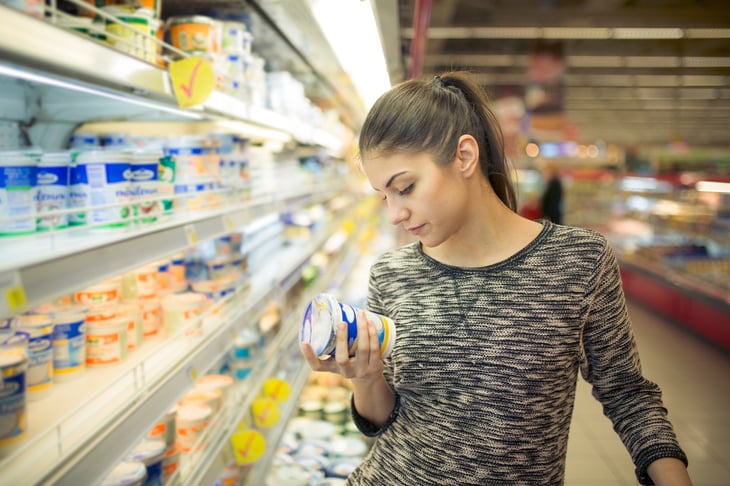
Editor's Note: This story originally appeared on The Penny Hoarder.
Here’s one simple way to cut your grocery bill: Stop throwing away so much food.
That may seem obvious, but you could actually be tossing perfectly good food without realizing it.
If you’ve been following sell-by dates on labels in the name of food safety, you may be wasting a ton of food unnecessarily.
Each year, Americans waste $161 billion in food at the retail and consumer levels, a lot of it unnecessary, according to the U.S. Food and Drug Administration.
How much are you wasting at home that you don’t have to?
What Do Sell-By Dates Really Mean?

A sell-by date tells stores how long to display a product for sale. It’s based on when a manufacturer believes food will be freshest.
Sell-by dates are just one kind of label manufacturers might use on your food, and none of them mean food will be unsafe to eat after the date, the USDA explains.
No federal regulations require companies to include date labels on food (with the exception of baby formula). For those companies that do, nothing regulates when those dates should be or what they actually mean.
Without a consistent system or actual safety guidelines, most of us don’t know what to make of any of it.
How to Decode Food Expiration Dates
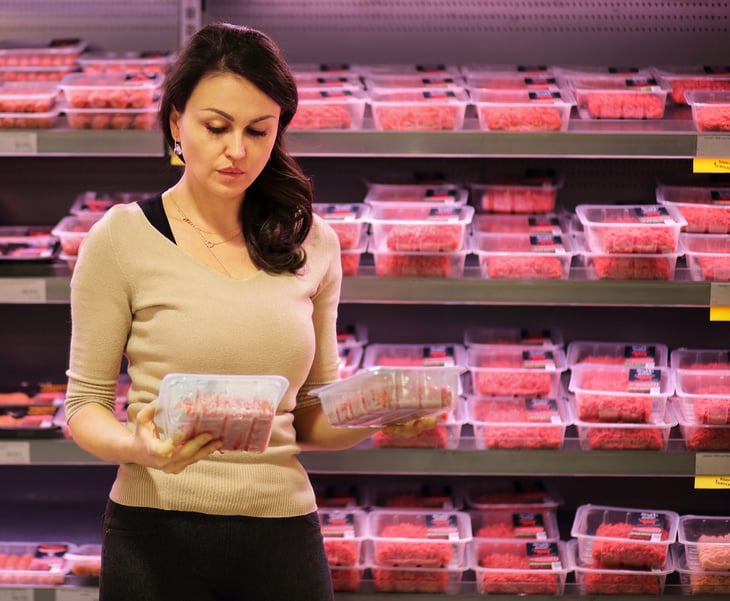
Depending on the regulations in your state and the whims of certain manufacturers, food packages can display at least one of several labels used across the industry.
Those are:
- Sell-By Date: A month/date/year that tells a store how long to display the product for sale, based on freshness.
- Use-By Date: A month/date/year by which a manufacturer recommends you consume a product to ensure its peak quality. The label might also say “best if used by” or “best before.”
- Closed or Coded “Date”: A packing number the manufacturer uses to track a product in transport and in case of a recall. Stores often use these packing numbers to learn when a product was packaged and delivered to determine how long to keep it on the shelf.
- Expiration (EXP) Date: Egg cartons and other poultry products with the USDA grade shield must display a “pack date,” the date they went in the carton, so they can track product sources in case of food-borne illness outbreaks. Some states also require eggs be stamped with an “expiration” date, which is scary-sounding but effectively a sell-by date.
None of these dates have anything to do with food safety.
What’s Behind Sell-By and Use-By Dates?

Manufacturers set sell-by and use-by dates based on when they believe food will be freshest.
Even on baby formula, the required use-by date refers to quality — the amount of nutrients and the consistency of the formula — not the potential for contamination or spoilage.
The manufacturer, not the government, sets the date, though the USDA requires it to be there.
As for coded dates, those are irrelevant to consumers.
What Sell-By and Use-By Dates Don’t Tell You

In all of these cases, the date or code on a package tells stores how long to display products. It doesn’t tell consumers when food will go bad.
If the date passes after you’ve got the item at home, the USDA says food should still be safe as long as you’re handling it properly. Food becomes potentially unsafe to eat once there’s evidence of spoilage — like odor or visible growth or decay.
The mix of dates can be annoying and confusing for consumers.
Lawmakers are attempting to clear things up with consistent federal standards for food labeling, but in the meantime, how do you know when your food is safe to eat?
For packaged foods, it’s much longer than you probably think.
How Long Can You Actually Keep Your Food?
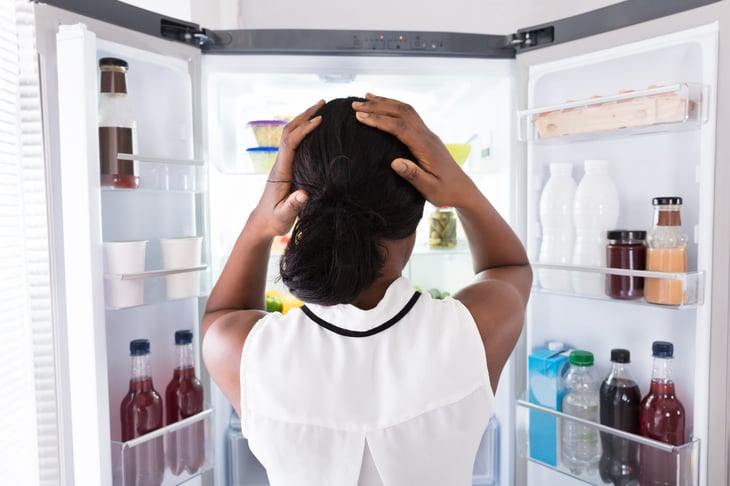
Most packaged foods are safe to eat indefinitely, so you can focus on their quality to determine whether they’re no longer good to keep.
You can keep canned foods indefinitely, as long as the cans aren’t exposed to freezing temperatures or above 90 degrees Fahrenheit. As long as the cans look OK — no dents, rust or swelling — the food is safe to eat, according to the USDA.
Canned foods can keep their quality and taste for up to two to five years, and about half that for high-acid foods like fruits and tomato sauces.
For other non-perishables, like chips, cereals, pastas or any of a variety of pre-made, carb-loaded meals and snacks, the issue is less about safety and more about quality.
In this case, buy the product by the sell-by date and throw it away when it tastes or feels stale. As far as safety is concerned, as long as the packaging is intact … well, they’re called “non-perishable” for a reason.
So when do you actually need to discard perishable food?
How to Know When Food Is Bad

Short answer: Use common sense. Throw away food that smells bad or has visible signs of spoilage.
While a cultural obsession with guidelines, rules and right answers might make a lot of people hesitant to guess at the quality and safety of their food, this is one place where you can trust your instincts.
Weird smells and visible mold? That’s kind of a no-brainer.
For perishable foods like meat and veggies, you have to be concerned with safety in addition to quality. Handle your food according to USDA guidelines — like storing meat and poultry on bottom shelves of your refrigerator — and watch for signs of spoilage.
To ensure fresh taste, purchase a product before its sell-by date, and refrigerate it when you get home, or freeze it if you won’t use it within the times in the charts below. Follow USDA food safety guidelines for thawing and refreezing perishable foods to protect against food-borne illness.
When to discard fresh or uncooked food items by storage time after purchase

- Poultry: 1 to 2 days
- Beef, veal, pork and lamb: 3 to 5 days
- Ground meat and poultry: 1 to 2 days
- Fresh variety meats: 1 to 2 days
- Cured ham: 5 to 7 days
- Uncooked sausage: 1 to 2 days
- Eggs: 3 to 5 weeks
When to discard packaged food items by storage time after purchase and storage time after opening
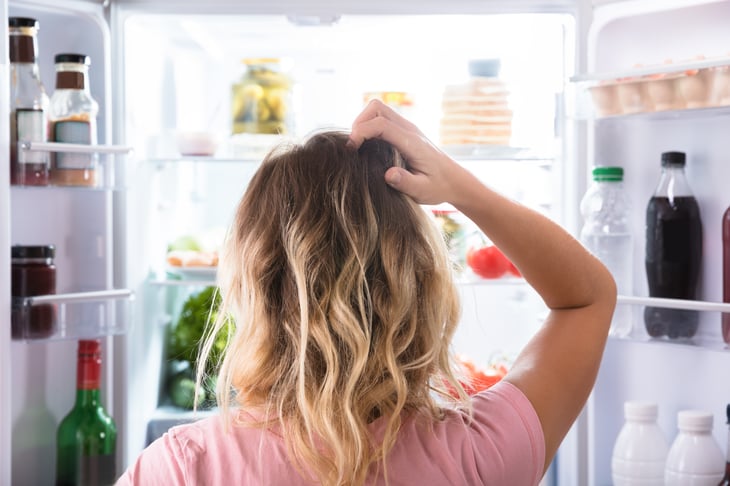
- Cooked poultry, refrigerated: 3 to 4 days, 3 to 4 days
- Cooked sausage: 3 to 4 days, 3 to 4 days
- Hard/dry sausage: 6 weeks, 3 weeks
- Corned beef: 5 to 7 days, 3 to 4 days
- Vacuum-packed dinners: 2 weeks, 3 to 4 days
- Bacon: 2 weeks, 7 days
- Hot dogs: 2 weeks, 7 days
- Lunch: 2 weeks, 3 to 5 days
- Ham, fully cooked: 7 days; Slices: 3 days; Whole: 7 days
- Ham, canned, refrigerated: 9 months, 3 to 4 days
- Ham, canned, shelf-stable: 2 years, 3 to 4 days
- Canned meat and poultry, shelf-stable: 2 to 5 years, 3 to 4 days
How to Ensure Food Quality and Safety at Home
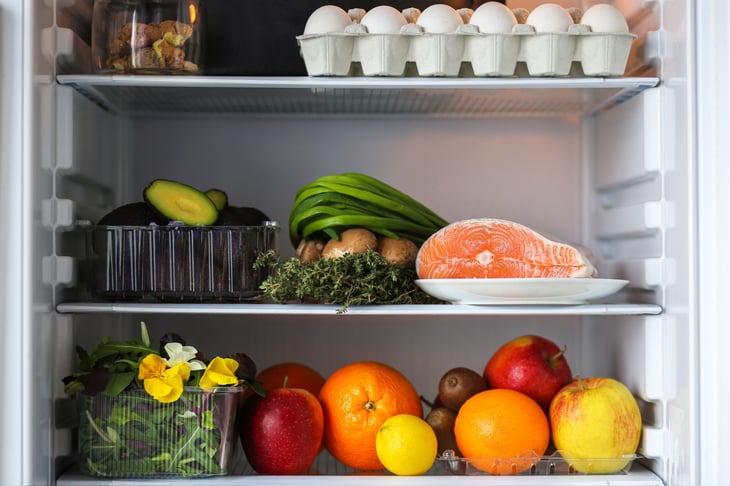
Here are a few other important food storage basics that can help you keep your food fresh and safe longer.
If you’ve ever worked in a restaurant, you’re no stranger to safe food handling guidelines. Follow these rules at home as well:
- Your refrigerator should be 40 degrees or lower. Your freezer should be 0 degrees or lower. Have them checked with an appliance thermometer.
- Wrap meat, poultry and fish securely to prevent them from leaking on other foods. Store them away from other foods, preferably in their own drawer or on the bottom shelf of your refrigerator, in case of leaks.
- Avoid cross-contamination by washing your hands and cleaning the cutting board, counter and utensils that touch raw foods immediately with hot, soapy water.
- Avoid the “danger zone”: Prepared hot foods should not fall below 140 degrees, and cold foods should not go above 40 degrees.
- Don’t leave perishable food out for more than two hours at room temperature.
- Use cooked leftovers within four days.
Track Your Food

If you keep a full refrigerator or have a lot of people handling food in the house, day dots could help you keep track of when food is coming in and when you should toss it.
Take note when out-of-the-ordinary circumstances threaten the safety or quality of your food.
For example, the USDA points out, “if hot dogs are taken to a picnic and left out several hours, they will not be safe if used thereafter, even if the (use-by) date hasn’t expired.”
Save Money — Save Your Food!

If you follow these simple food handling tips and common sense, you can save yourself a lot of worry over the quality and safety of your food.
You can also save a lot of money by not tossing perfectly good food.





Add a Comment
Our Policy: We welcome relevant and respectful comments in order to foster healthy and informative discussions. All other comments may be removed. Comments with links are automatically held for moderation.